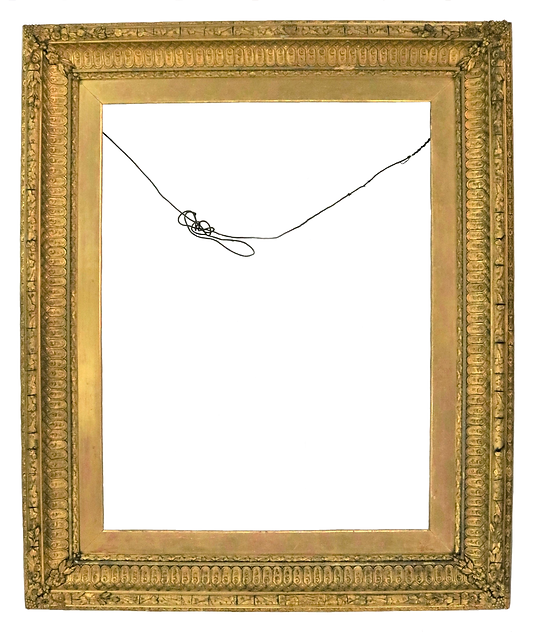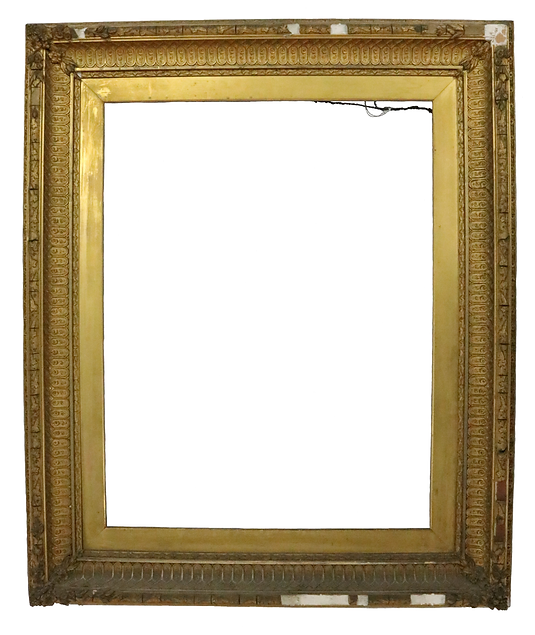
MEGAN LINFORD PORTFOLIO
Decorative Arts Conservation: Gilded Frame
Shuttleworth Trust


Hover over picture to see artefact before treatment.
Condition
This artefact was treated by a team of four conservators.The lower half of the frame required more treatment, as dust, dirt and possible soot had accumulated on the upper surfaces, especially along the slip edge of the bottom bar. The composition decoration had cracked and curved. Due to this, it was unstable in some areas, while in others sections had been damaged and lost, including the whole outside edge of the bottom bar. The majority of the surface of the frame had been oil gilded, with the slip forming the only section to have been water gilded. This had then had a matt coating applied, parts of which had been rubbed away, leaving the surface mottled and uneven.
Treatment Aims
To clean the surface, replace areas of loss and stabilise areas at risk of being lost.
Treatment
The frame was first dry cleaned using a combination of soft and stiff bristled brushes, removing the loose surface dirt. The majority of the oil gilding was gently wet cleaned using cotton swabs soaked in distilled water. This was effective in most areas, though the thicker layer of dirt along the bottom rung remained. A thin, plain gilded bar running through the middle of the decoration was also avoided, as testing had shown the water to loosen fragile sections. As dry cleaning had removed most of the dirt on the bar, it was decided not to further treat it to prevent damage.
To remove the remaining dirt, a 10% solution of triammonium citrate (TAC) was applied, then removed using distilled water swabs. This was very effective, cleaning the surface further than water alone. A 5% solution of TAC was used on the rest of the frame, to even the colour and level of cleaning across the whole object. Loose pieces were secured with the consolident Plexitol in a 60-40 ratio.
In order to ensure that the project would run to time with all team members able to maximise their efficiency at any given point, half the team would work on cleaning the water gilding, while the other two tested and made moulds and casts for the missing section of composition.
The coating on the slip was removed using high acyl gel applied directly to the surface for twenty seconds at a time. It was then removed, and the surface polished.
Moulds for the missing decorations were taken from other sections of the frame using Steramould. They were then cast in Jesmonite, with thin sections strengthened with a layer of 22gsm Okay tissue. Golden Acrylics and powder pigments were used to tint the casts, making the finishing colour closer to the original. They were sanded to fit. Small sections that could not be made in the same way were moulded using Milliput. All replacement pieces were gilded using acrylic size and 23.5 karat gold. Golden acrylics and powder pigments were used to age the new pieces to match the original, and allowed to dry. The new sections were attached using Paraloid B72, to ensure that they could be removed at a later date if needed.
Hover to pause slideshow.
